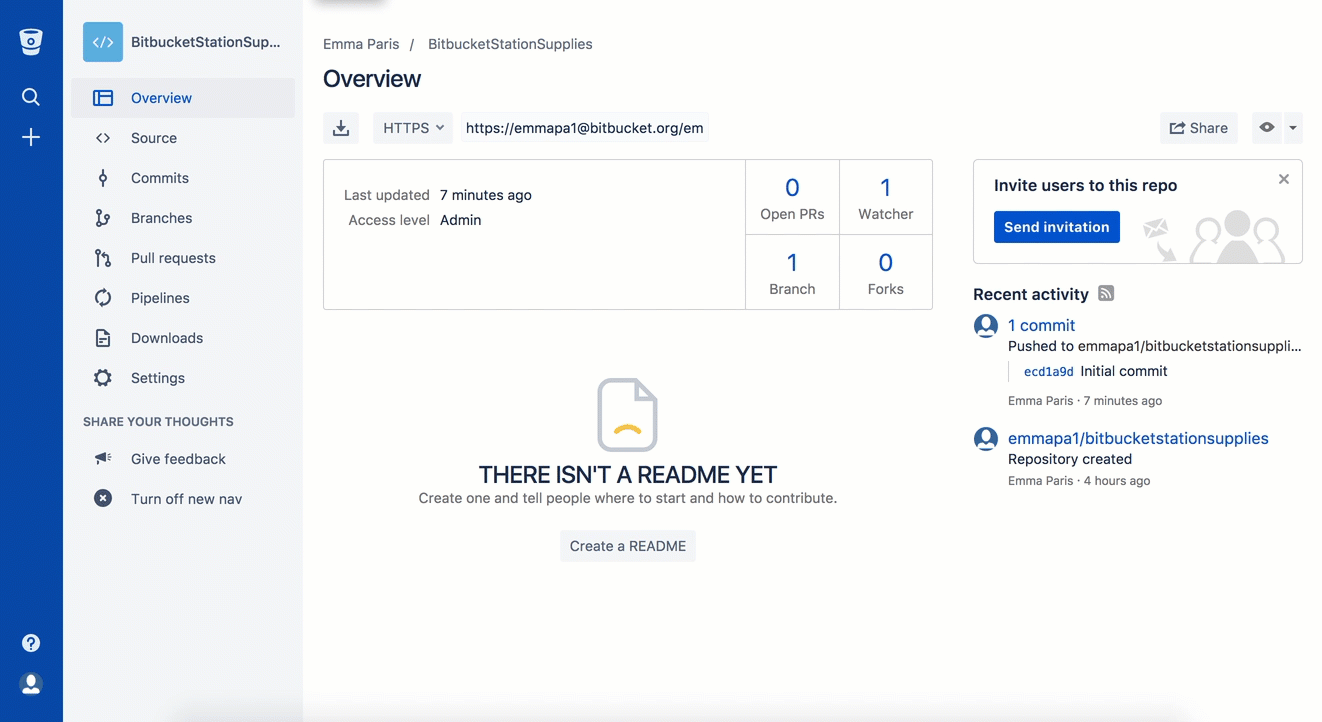

- SOURCETREE PULL REQUEST HOW TO
- SOURCETREE PULL REQUEST FOR MAC
- SOURCETREE PULL REQUEST PATCH
- SOURCETREE PULL REQUEST CODE
- SOURCETREE PULL REQUEST WINDOWS
You might want to revert a pull request because the maintainer merged it without proper review. This can happen, especially when the team uses a complex branch strategy, such as Git Flow.
SOURCETREE PULL REQUEST CODE
In fact, on average code reviews sit idle for 70% of cycle time! That's why PR merge time is one of the core metrics for companies like Slack. It should be noted that in practice this process can take a surprisingly long time. When the reviewers accept the PR, they merge the changes into the destination branch-often deleting the source branch-and mark the pull request as closed.Though not mandatory, there's typically a code review process in which one or more people review the changes and give feedback on them before merging them.When the engineer completes the task-or feels like it could use a fresh pair of eyes, even without being completed-they create a new pull request, with a title and a description explaining the reason for the change.It's a good practice for backup purposes. At this point, they can already push their commits to the remote repository.Then, the engineer creates a new branch-generally off of the main branch, but this could vary-and adds their commits locally.The process starts with the engineer cloning the repository locally.I'll describe what the workflow might look like for a company using a service such as GitLab or Azure DevOps.

The way a pull request-or merge request, as they're called in GitLab-works varies depending on the source code hosting service you're using.
SOURCETREE PULL REQUEST PATCH
It predates hosting services such as GitHub and what it does is generate a list of changes in the format of a patch file which gets sent by email.) How Does a Pull Request Work? (To make things slightly more confusing-because, why not?-Git does offer a command called request-pull. First popularized by GitHub, nowadays they're common in other platforms such as GitLab, BitBucket, and Azure DevOps. Rather, they are a feature of source code hosting providers. Pull requests are not a feature of the native Git software. What Is a Git Pull Request?Ī pull request is a process by which a contributor to a Git repository offers some code and asks for the project's maintainer to accept it and merge it. Specifically, we'll open by defining a pull request. The Pull Request Process: What It Is and How It WorksĪs promised, let's start by tackling some fundamentals. The Pull Request Process: What It Is and How It Works.
SOURCETREE PULL REQUEST HOW TO
With those basics out of the way, we'll finally tackle the "how." You'll learn how to revert a pull request in GitHub, in GitLab, and also in "vanilla" Git, using the git revert command. Before we go there, we'll talk about the pull request process itself, explain how it works, and give examples of situations in which you'd need to revert a PR. That's what this post is about: explaining how to revert a merged pull request. Accepting and merging a pull request should signal the end of the specific contribution, but if things don't work as planned for some reason, you might need to revert a pull request in Git. The pull request is the process by which a potential contributor asks the maintainer of a project to accept their branch and merge it into the project's mainline.
SOURCETREE PULL REQUEST WINDOWS
Take special care of the path for aws (which is /usr/local/bin/aws in this case) and will most certainly be different under other Unixes or Windows configurations.Many of the organizations that use Git-and probably the vast majority of open-source projects as well-employ a workflow centered around the pull request. Please note: this is based on OS-X setup. Helper = /usr/local/bin/aws -profile codecommit-user codecommit credential-helper = trueĪfter saving the config file should look something like this: įetch = +refs/heads/*:refs/remotes/origin/*
SOURCETREE PULL REQUEST FOR MAC
Atlassian SourceTree is a visual tool for Mac and Windows to manage source code repositories.


 0 kommentar(er)
0 kommentar(er)
